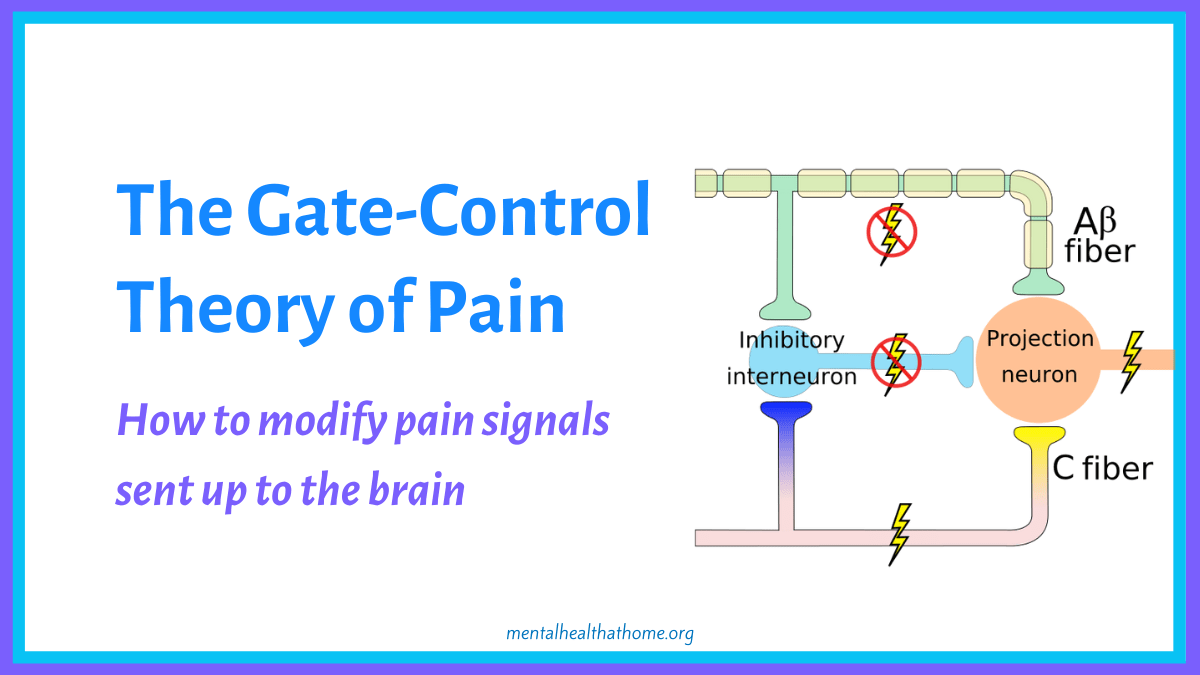gate control theory
This theory explains about a pain-modulating system in which a neural gate present in the spinal. Keep a record of your experiments.
 |
| Transmitting Pain And Itch Messages A Contemporary View Of The Spinal Cord Circuits That Generate Gate Control Sciencedirect |
This article aims to look at the anatomical structures associated with pain perception in addition to examining the Gate Theory of.

. Web The gate control theory of pain revolutionized how pain is understood and shaped how physicians and other healthcare professionals treat and explain pain to their. Web The gate control theory of pain sensitivity was proposed by Melzack and Wall in 1965 to include free nerve endings in the deeper layers of the skin. In 1965 researchers Ronald Melzack and Patrick Wall published a paper outlining the gate control theory of pain1The purpose was to help explain how mental states impact the perception of pain either reducing or increasing pain sensations. Web Gate control theory.
Melzack and Wall suggested that this process explains why we tend to r See more. Web Beyond gate control theory your mental state also influences your perception of that pain. A new theory of brain function together with recent research that has derived from it are described which throw light on complex. Web In the Gate Control Theory of Pain the presence of non-pain input including information from these large-diameter sensory fibers open or close the gate that.
Web Gate theory and pain pathway. Web The pain gate control theory states that gates allow certain stimuli to pass through neural pathways to your brain. Web Gate Control Theory is a trusted and succinct model of pain that was first introduced in 1965 by Drs. Non-noxious stimuli the ones that dont make.
Web In contrast the gate control theory of pain which must somehow include itch asserts that large myelinated fibers Aβ fibers associated with touch pressure and. Ronald Melzack and Patrick Wall. Web The Gate Control Theory of Pain is a mechanism in the spinal cord in which pain signals can be sent up to the brain to be processed to accentuate the possible perceived pain or. Web The gate control theory of pain was formulated in 1965 by a neurobiologist and a psychologist who wanted to propose that spinal nerves act as gates to let pain travel.
Limitations include oversimplifications and. Web Gate control theory was described by Melzack and Wall in 1965. Web In the gate control theory the experience of pain depends on a complex interplay of these two systems as they each process pain signals in their own way. Web The gate control theory of pain was first introduced by Canadian psychologist Ronald Melzack and British physician Patrick Wall in the 1965 Science article titled Pain.
Feelings like fear anxiety depression and a tendency to catastrophize or to. Web The Gate Control Theory of Pain is a mechanism in the spinal cord in which pain signals can be sent up to the brain to be processed to accentuate the possible. Web Shortcomings of the Gate Control Theory have been described extensively Mendell 2014Nathan 1976 see 1613. Web Knowing about the gate control theory of pain can give you the opportunity to experiment with what opens and what closes the gates for you.
Web The Gate Control Theory formulated by Melzack and Wall in 1965 states that non-painful stimuli close the doors to painful stimuli by preventing the sensation of pain. Web The gate control theory explores the idea that pain levels are determined by how these two nervous systems interact while sending pain signals to the brain. These nerve endings respond.
 |
| Cool Vr And The Gate Control Theory Of Pain Vre |
 |
| Gate Control Theory Of Pain |
 |
| The Gate Control Theory Of Pain What It Means For Pain Control |
 |
| Schematic Representation Of The Gate Control Theory Of Pain In Yellow Download Scientific Diagram |
 |
| Pain And Pain Management Clinical Gate |
Posting Komentar untuk "gate control theory"